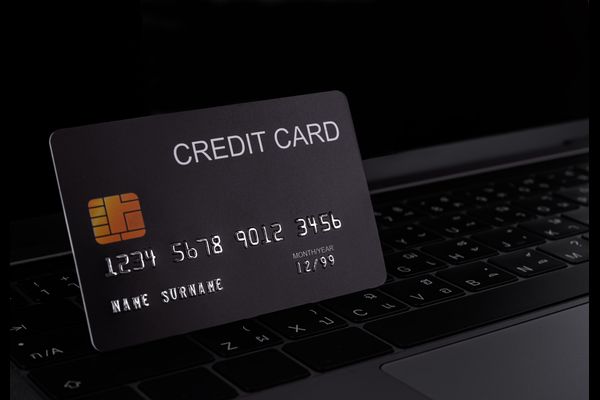Credit cards have become an integral part of our financial lives. They offer the convenience of purchasing and paying later on. Card users get a monthly bill and can either pay the amount in full or the minimum amount due in the credit card bill generated.
Busting the myth that credit cards are only for people in high-income groups, people in lower-income groups can also use them. Lenders do this to ensure that people from all income groups enjoy the advantages of credit card usage.
While income proof is typically required when applying for a credit card, there are other ways to obtain a credit card. This article explores the options available to individuals from low-income groups and how to obtain credit cards without submitting income proof and eventually enjoy using them.
How to Build Credit without Income Proof?
There are a few steps you can take to increase your chances of approval for a credit card without income proof:
- Maintain a Bank Account: A bank account indicates stability and is a reliable source for lenders. It is crucial to establish a banking relationship to enhance your creditworthiness.
- Include a Joint Applicant: If you have a spouse or family member with a higher income and good credit history, you can consider adding them as co-signer or joint applicant. The lender will evaluate their income and creditworthiness, reducing the need for your income proof.
- Demonstrate Responsibility:Responsible credit card usage is essential regardless of income level. Keep your spending in check, avoid accumulating excessive debt, and monitor your expenses regularly. Keep paying your monthly credit card bill in full or pay at least the minimum amount due in credit card monthly bill. Also, consider secured or unsecured credit cards to build credit while keeping your spending manageable to continue enjoying the advantages of credit card usage.
- Debt Consolidation: Focusing on debt consolidation can be beneficial if you have irregular or less income. Consolidating your debts helps streamline payments, lower interest rates, and simplify repayment. Reducing your debt-to-income ratio can prevent your debt from becoming overwhelming.
- Check Your Credit Report:Regularly review your credit report to identify errors. Monitoring your credit report helps you know the exact position of your financial health. Lenders assess your credit report when evaluating your creditworthiness. It is crucial to maintain a clean and error-free report.
How to Get a Credit Card without Income Proof?
There are alternative options to secure a credit card even if you cannot provide income proof:
- Secured Credit Card: A secured credit card requires a security deposit as collateral. You can obtain a credit card without income proof by providing a security deposit. The credit limit is typically determined by a percentage of the deposit amount, offering a practical way to establish credit.
- Student Credit Card: Studentsenrolled in a college or university may be eligible for a student credit card. These cards are designed for lower or no-income students and often have lower credit limits. They serve as an excellent tool for building credit while managing expenses.
- Credit Card Against a Primary Card: Another option is getting an add-on credit card against a primary credit card owned by a family member. The primary cardholder’s good credit history and income are the basis for eligibility, allowing you to access a credit card without providing salary slips or income proof.
Also Read: Types of Airport Lounges Covered by Credit Cards
What Is A Low Income Group Credit Card?
While high-end credit cards often provide you with luxury perks, rewards, and exclusive offers, credit cards for low-income individuals cater specifically to their needs. These cards may offer fewer amenities but are hugely beneficial to kickstart your credit journey.
Also Read: Rewards and Cashback Programs: Comparing Credit Card Benefits
Features of Low-Income Credit Cards
Credit cards tailored to low-income individuals offer specific features and benefits:
- No or Minimal Annual Fee: One of the best advantages of credit card is that they often have no annual or minimal fee, ensuring affordability for individuals with lower incomes.
- Lower Interest Rates:Low-income credit cards typically offer lower interest rates than others. This feature helps individuals manage their expenses and keep interest charges minimal.
- Adjustable Spending Limits: Initially, these cards may have lower spending limits. These limits can be increased based on your spending habits and financial management. Gradually, your credit limit may expand as you demonstrate responsible credit behavior.
- Basic Features and Protections:Low-income credit cards offer essential features such as online account management and fraud protection. Despite their simplicity, these cards provide convenience and security.
Also Read: Smart ways to use credit card concierge Services
Conclusion
Credit cards can be valuable financial tools for low-income individuals, offering opportunities to build credit and manage expenses effectively. By understanding the options available and selecting the right credit card, individuals in lower-income groups can access the benefits of credit cards while maintaining the minimum amount due on their credit card.
To make the most informed decision, it’s essential to compare credit cards from different providers. Look for features that align with your financial needs and lifestyle. Factors to consider may include interest rates, annual fees, rewards programs, and any special offers.
Remember to use credit responsibly, make timely payments, and keep your spending within your means to maximize the advantages of these financial tools. Comparison shopping for credit cards will help you find the best fit for your financial situation and goals.


